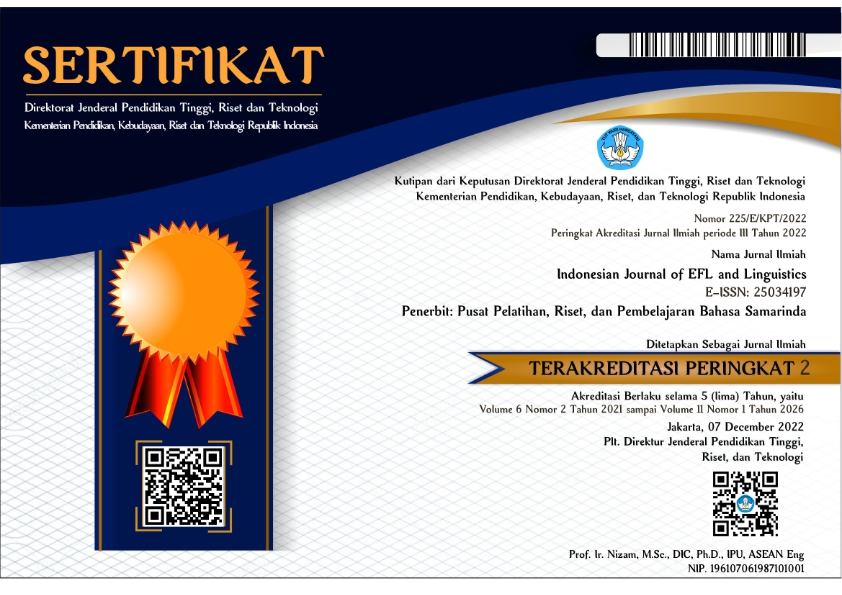Translation Equivalence of Tourism Website Content: A Comparison Between Google Translate and DeepL Translate
Abstract
Translation serves as a bridge to overcome language barriers. This research compares the types of equivalence produced by Google Translate (GT) and DeepL Translate (DT) using Koller`s equivalence framework. Employing a qualitative approach, the study follows data condensation, data presentation, and conclusion verification procedures. The translations generated by GT and DT were analyzed in the context of Kampung Kopi Camp, a tourism website being developed as a bilingual platform. The findings reveal two key classifications: (1) the same type of equivalence, where both GT and DT produce denotative, pragmatic, and text-normative equivalence for certain data, and (2) different types of equivalence, where the two tools generate varying results for the same data. Additionally, GT demonstrates a broader application of equivalence types, with a higher occurrence of pragmatic and connotative equivalence, making its translations more engaging. In contrast, DT adopts a more formal approach. These differences suggest that GT may be more effective in capturing contextual and expressive nuances, while DT maintains a stricter adherence to formal structures. By identifying the characteristics of these translation tools, this study provides insights into their effectiveness in producing equivalent translations, particularly in the tourism field. Understanding these variations can guide users in selecting the most suitable machine translation tool based on their specific needs, whether for formal communication or more engaging, context-driven translation. Ultimately, this research highlights the strengths and limitations of GT and DT, contributing to a broader understanding of machine translation in cross-linguistic communication.
Copyright (c) 2025 Indonesian Journal of EFL and Linguistics

This work is licensed under a Creative Commons Attribution-NonCommercial-ShareAlike 4.0 International License.




